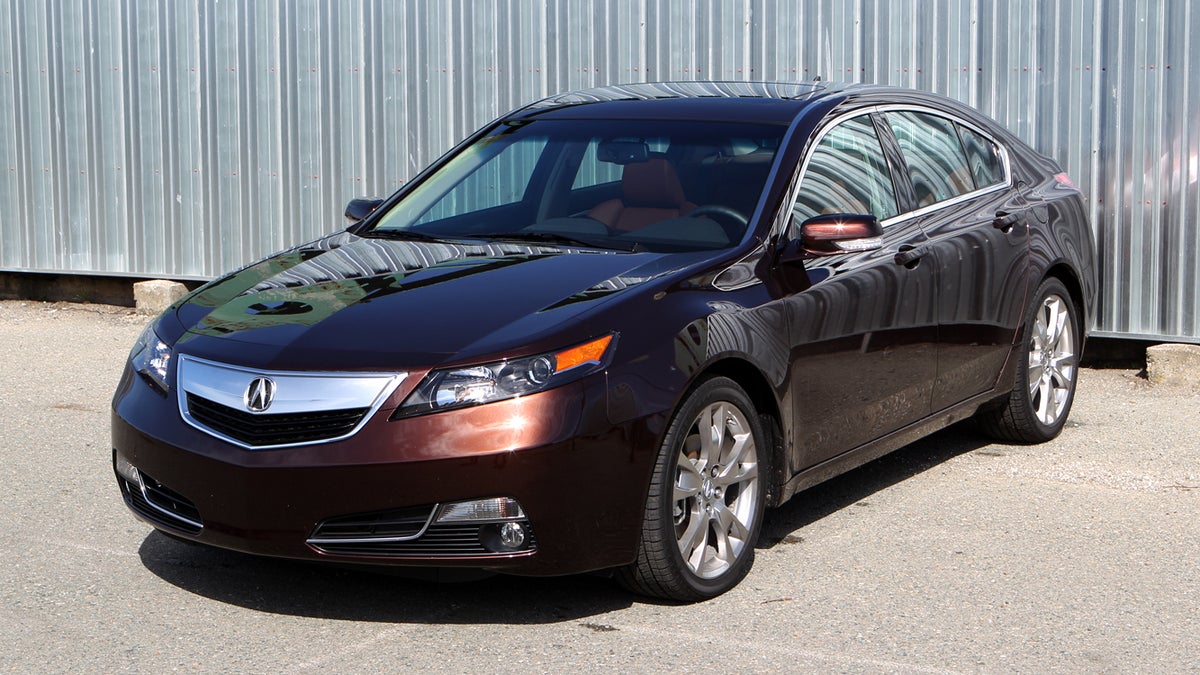Please, Acura, don't ruin the NSX
Will it be too complicated or hopelessly underwhelming? We check the specs and make an educated guess.

If Acura thinks that its announcement that a new NSX concept will make a bow at the 2012 Detroit auto show is going to whip me into a fanboy frenzy, well, then it's absolutely correct.
However, if anything, today's announcement has raised more questions and concern than excitement and anticipation.
This can't be right...
Let's take a quick look at the rumored specs. We're starting with 3.5-liter V-6 (308-horsepower est.) that is hybridized by the integration of an approximately 40-horsepower (30kW) electric motor with its seven-speed dual-clutch transmission. There are also a pair of 27-horsepower (20kW) electric motors on the rear axle handling torque-vectoring duties. Sound familiar? Well, it should, because those specs are taken verbatim from the new SH-AWD hybrid system that Honda/Acura is developing for the next Acura TL.
But that can't be right, can it? The next-gen SH-AWD hybrid system ditches the driveshaft, decoupling the rear axle from the front and resulting in what should be a pretty front-biased 85/15 torque split of its 400 available ponies. If this is Acura's idea of the next NSX, then it can keep it. But, even I'm not jaded enough to believe that Honda/Acura would sully the NSX plate name by slapping those three letters onto the rear valance of what's essentially a front-engined, front-wheel-drive vehicle. The next NSX must carry its engine amidships. So where does that leave us?
Then how will it work?
A sports car like the NSX can't send most of its power to the front axle--the original NSX was a simple lightweight, rear-wheel-drive affair--so first we've gotta figure out how Honda can get more than 60 horsepower to the rear wheels within the parameters that we've been supplied. We'll start with the hard way.
Honda would have to start by moving the V-6 and its seven-speed transaxle behind the driver's seat and in line with the rear wheels. That handles the amidships engine mounting, but now we've got all of the power spinning the rear rubber and this is supposed to be an AWD car. So now Honda's got to run a driveshaft from the rear axle, back up to the axle where it can be split between port and starboard via a second differential. This won't be hard; the current Honda Real-Time 4WD system is essentially this system but backward. So we've got the AWD system mostly sorted, but we've got a new problem: the pair of 20kW electric motors on the rear axle.
But if we're already dealing with the complexity of a full all-wheel-drive system with two differentials and a central driveshaft, why bother with the added complexity of using the in-wheel electric motors at the back end--especially with the unsprung weight issues that are inherent with that configuration? The electric SH-AWD system that made so much sense in the context of the next TL suddenly seems a bit unnecessary on the rear axle of a midengined car.
This is based on pure speculation, but it looks like my hypothetical next NSX now has one gasoline engine and three electric motors (as well as the Li-Po batteries to spin them) sending a maximum 400 ponies through a redundant AWD system. And unless Acura's trying to pull a Lexus LFA and build a super expensive supercar out of exotic materials, it'll probably pretty portly with all of that hardware. We're talking a power-to-weight ratio that can't possibly be better than the Nissan GTR's. Why so complicated? Why not just use a turbo instead of the electrification? While we're having this discussion, why even bother going AWD on a midengine configuration in the first place? Why not just go ultralight, midengine, RWD if you're going to revive the NSX nameplate?
How would I do it?
So, I've been nitpicking the NSX based on little more than hearsay and speculation, but what would I do differently were I in charge?
It's actually quite simple. Like Acura, I'd start with the SH-AWD hybrid system that's being developed for the next TL. However, rather than putting the gasoline engine up front and the electric pair on the rear axle, I'd rotate the system 180 degrees. Drop that hybrid power train on the rear axle where it belongs. On the front axle, you've got 60 ponies' worth of on-demand, all-wheel-drive pull, but with the weight savings earned by skipping the driveshaft and front differential. What's more, putting the main engine's 340 horsepower to the rear wheels nets you a 15/85 torque split from front to back, which is pretty darn close to the Ferrari FF's 20/80 split. If it's good enough for Maranello, it's good enough for the halo car of Honda's premium brand.
While I'm in there making hypothetical changes, let's make that seven-speed dual-clutch transmission optional and toss a manual shifter on the center tunnel and a proper clutch pedal in the footwell. How about a lighter non-hybrid option for the purists?
I may be wrong, but I doubt it.
Then again, I may be totally off the mark here. Honestly, I hope I am. We won't know for sure until the next Acura NSX concept is revealed in earnest in January 2012.

